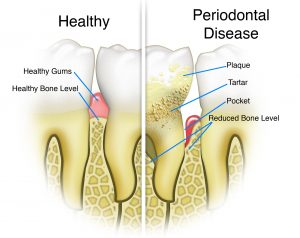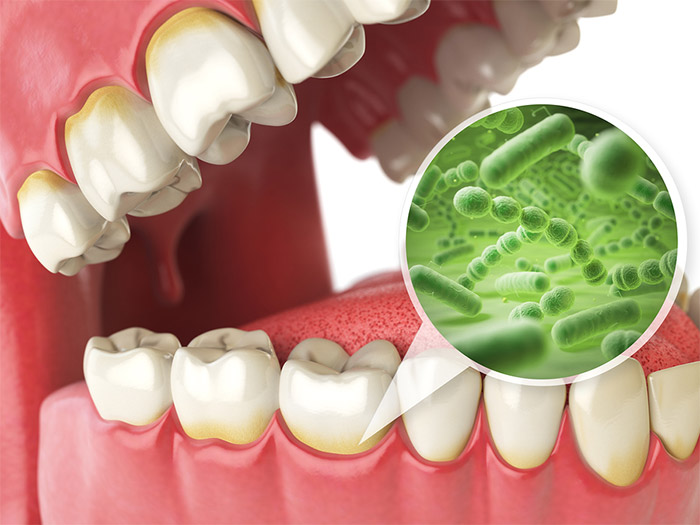Periodontal disease is a major cause of tooth loss. Most of the time, periodontal disease is preventable through good oral hygiene and diet.“Gum disease” relates to a range of conditions that affect the supporting tissues for the teeth. These supporting tissues comprise both the gum that can be seen in the mouth and also the deeper tissues of the bone, root surface and the ligament that connects the teeth to the bone.

What causes periodontal disease?
Periodontal disease is caused by the presence of bacteria which forms a ‘plaque’. This is a sticky, colourless film that forms on your teeth, especially around the gum line.
Risk factors include:
- Smoking
- Diabetes
- Stress
- Pregnancy
- Genetics(familial history of tooth loss)
- Various medications

What are the most common forms of periodontal disease?
- Gingivitis : this is an inflammation of the gums caused by the bacterial infection. This is reversible with appropriate oral hygiene. Can be seen by bleeding gums.
- Periodontitis : this is permanent damage to the ligament and bone that supports and holds the teeth. A space may develop between the gum and bone forming a “pocket” providing a sanctuary for bacteria to thrive, leading to progression of the disease. If left untreated periodontitis may cause abscesses and tooth loss.
What are some of the warning signs of periodontal disease?
- Bleeding gums when you brush/floss your teeth.
- Receding gums.
- Sensitive teeth or gums.
- Bad breath or a bad taste in your mouth.
- Loose teeth or teeth that have drifted.
Can gum disease be treated successfully?
Yes.
In the majority of cases the rate of gum disease can be arrested with good oral hygiene. Management of gum disease becomes more difficult and less predictable the more advanced the disease. Therefore, the sooner periodontitis is diagnosed and treated the better. Regular dental examinations at The Rawson Dentist are important to check for the presence of gum disease.
Treatment involves:
- achieving the best possible home oral hygiene care
- regular check ups with professional cleaning of the teeth above and below the gum line (into the pockets) to remove the plaque and hard deposits (calculus / tartar),
- trying to remove risk factors such as smoking.
The treatment of gum disease is aimed at controlling the amount bacteria. This is an ongoing, lifelong process.
Contact Rawson Dentist for more information

